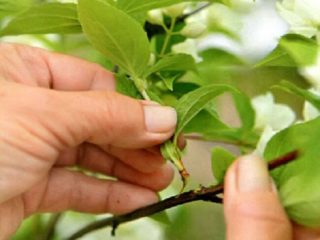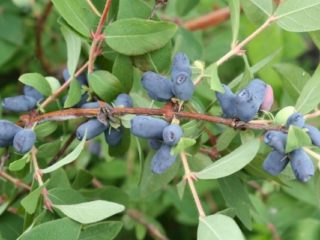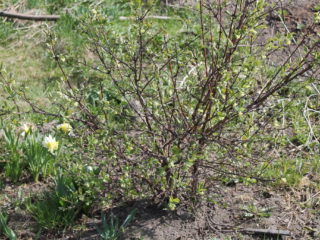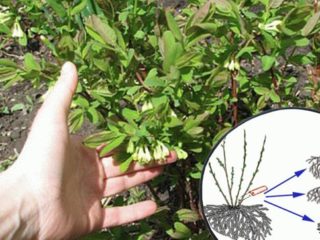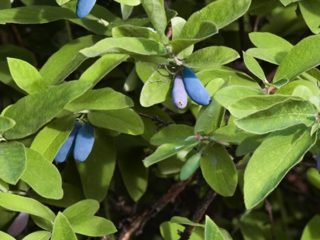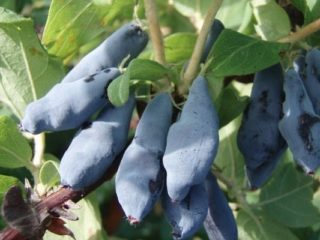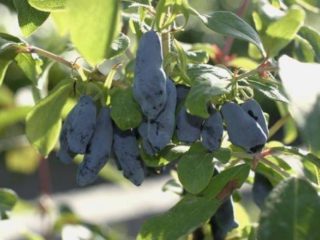Content
By the end of July, fruiting of even the latest varieties of edible honeysuckle ends. Despite the fact that this shrub is unpretentious, certain work with it must be continued after the fruits have been harvested. Caring for honeysuckle in August and September is not difficult and does not take much time, but it should not be neglected, since it directly determines how the shrub will survive the winter and whether it will produce a harvest next year.
How to care for honeysuckle after harvesting
Edible honeysuckle is increasingly found in gardens and homesteads. This culture owes its popularity, first of all, to its unpretentiousness and low maintenance requirements. Honeysuckle has excellent frost resistance and can be grown without shelter even in cold regions. At the same time, the berries of this plant are not only tasty, but also nutritious; they contain much more useful substances than many others.
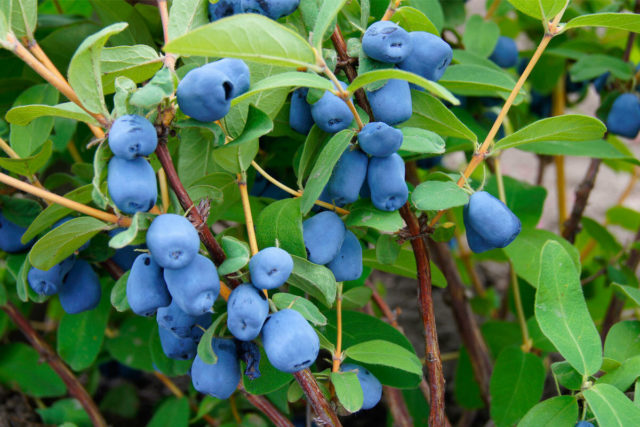
Honeysuckle is a healthy and tasty berry
Fruiting always weakens berry bushes quite significantly, and honeysuckle is no exception.In August, immediately after picking berries, it needs care, rest and recovery, so no radical measures (pruning, replanting) are carried out with it at first. To help honeysuckle recover faster and strengthen it in the pre-winter period, at the end of August or beginning of September the bushes are fed with potassium and phosphorus fertilizers. They are applied by the root method in the form of an aqueous solution, so they are quickly absorbed by the plant. The standard rate for each edible honeysuckle bush is 25-30 g of superphosphate and 15-20 g of potassium sulfate, this amount is diluted in 10 liters of water.
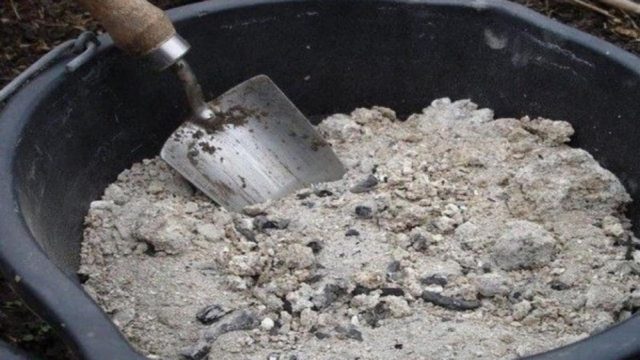
Wood ash will reduce the acidity of the soil and enrich it with potassium
In addition, after harvesting, in August and September, the following care measures are carried out:
- Watering. Produced throughout the season when there is insufficient precipitation. If the weather is dry in August-September, then the bushes are watered once a week at the rate of 10 liters per each.
- Root zone care. In August-September, loosening and mulching are carried out, weed removal, as well as mowing if the soil around the bush is turfed.Important! The root system of honeysuckle is located quite close to the surface, so care should be taken when excavating in the root zone.
- Autumn pruning. In the northern regions it is done at the end of September; in regions with a warm climate it can be done later. Shrubs are cleared of dry, broken, damaged branches. In adult fruit-bearing bushes, thinning is carried out, thickening and rubbing shoots are removed, as well as side branches if they lie on the ground.From old specimens, part of the perennial wood, which produces weak annual growth, is cut out. A bush older than 20 years can be radically rejuvenated by completely cutting off all old shoots, except for a few annual ones.
- Pre-winter spraying with urea. They do this type of care when frost sets in.
- Caring for young seedlings and shelter for the winter.

In autumn you can plant honeysuckle in open ground
Autumn is the best time to plant and transplant honeysuckle. In most regions, such care work is performed during this period. Edible honeysuckle, as a rule, ends its growing season very early; already at the end of September there are practically no leaves left on it. Meanwhile, the earth is still quite warm at this time, and the onset of cold weather is still far away. A plant or seedling transplanted at this time is guaranteed to have time to take root and adapt to the new place. In spring, such shrubs will confidently begin to grow. If planting or replanting is postponed to spring, then there is a high risk of not having time to carry out the work in the required time frame, since honeysuckle enters the growing season very early.
Some aspects of honeysuckle care in August-September are covered in the video at the link:
How to treat honeysuckle after harvesting
Edible honeysuckle is quite rarely affected by diseases and pests even in the absence of care, therefore, with rare exceptions, it is not processed during the growing season. A complete ban on the use of any chemicals exists in the summer, during the period when fruits ripen. However, some care measures, such as treating the crown with special products, still need to be carried out both at the beginning and at the end of the season.

Spraying the bush in early spring will prevent the development of fungal diseases
In early spring, the bush is sprayed with 1% Bordeaux mixture to prevent fungal diseases. But after the end of fruiting, honeysuckle is usually processed only once, and this is done after the first frost. To spray the bushes during this period, use a solution of urea (carbamide), for the preparation of which you will need to dilute 35 g of the substance in 10 liters of water. Treating honeysuckle with urea in late autumn will strengthen its immunity and also kill pests overwintering in the folds and cracks of the bark. Work is carried out during the day, in dry weather, at a temperature of about 0 °C.
Treatment of honeysuckle bushes after harvesting in August may be necessary in emergency cases - in the event of a disease or pest invasion, which is extremely rare. If powdery plaque, dark spots and other signs of fungal damage to the bush appear on the leaves, you need to cut off the diseased shoots and spray the bushes themselves with a 1% solution of Bordeaux mixture. If in August-September caterpillars, colonies of aphids or other insects appeared on the leaves and shoots, then the plantings are treated with insecticides of various effects (Aktellik, Fufanon, Iskra, Inta-Vir, etc.).
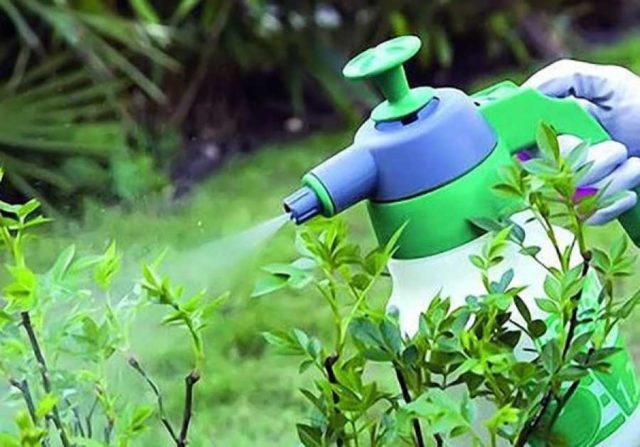
You can spray honeysuckle against pests only after harvesting the fruits.
How to prepare honeysuckle for winter
All care activities that are carried out after picking berries in August and autumn, one way or another, are aimed at strengthening the immunity of honeysuckle bushes and preparing for winter.Feeding with superphosphate and potassium fertilizers increases winter hardiness, pruning reduces the number of shoots on which nutrients are wasted. In addition, during the summer honeysuckle lays flower buds for next year, which will become the basis for the next season's harvest.
Is it necessary to cover honeysuckle for the winter?
Mature honeysuckle bushes have good winter hardiness. Most varieties of this shrub can easily withstand temperatures down to -40°C, so there is no need to cover them. Shelter is needed only for young seedlings obtained from cuttings or layering of the current year and overwintering for the first time. They have a poorly developed horse system and are quite vulnerable.
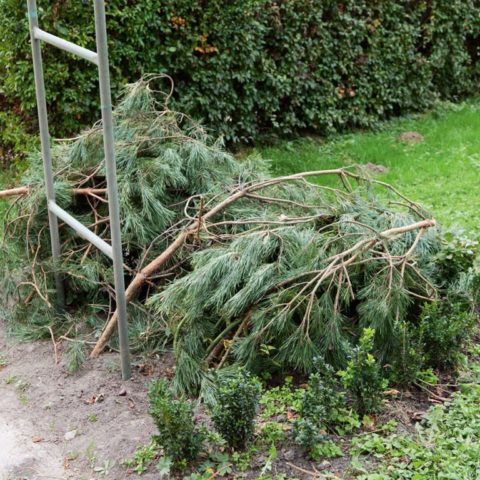
For the winter, very young honeysuckle bushes need to be covered with spruce branches.
Young honeysuckle bushes are covered for the winter with spruce branches, straw, and fallen leaves. In adult plants, you can insulate the root zone with a layer of humus, but such a measure is not mandatory.
Conclusion
Caring for honeysuckle in August and September serves quite a few functions. All activities carried out at this time are aimed at strengthening the bush after fruiting, as well as strengthening it before the upcoming wintering. Many gardeners consider caring for honeysuckle during this period unnecessary, but it is in August and September that the bushes form flower buds, from which the next year's harvest is laid. Therefore, you should not neglect these works, because autumn care of honeysuckle is the basis of the future harvest.Moreover, it will not take much time in August and September.


